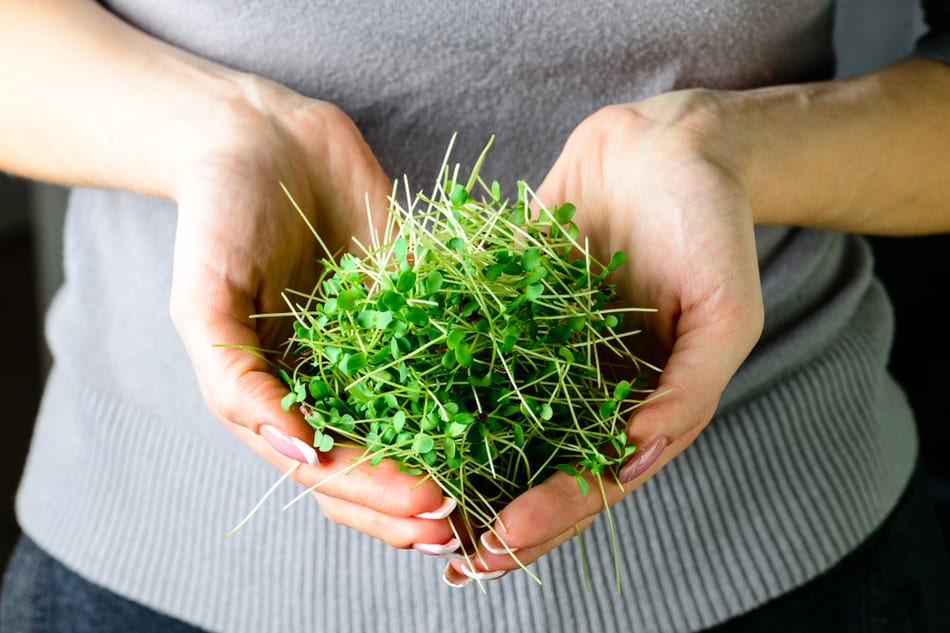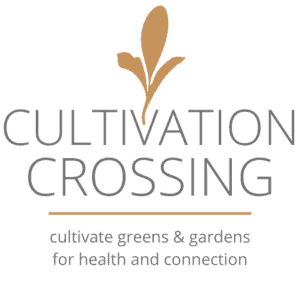Microgreens are a great way to get your greens on. But if you’re not careful, they might also make us sick!
Microgreen gardening can seem like an overwhelming task at first; it’s hard enough for me with my lack of experience in the field–so I recommend starting small by growing just one tray or ten trays until things become more apparent.
When microgreens are grown correctly, they can make you sick through foodborne illnesses. This is likely to happen if the wrong type of seed or pesticides were used during production and mold growing on them due to practitioner error and unsafe practices at harvest time that introduce pathogenic bacteria into your meal!
Are Raw Microgreens Safe To Eat?
Microgreens are vegetables that are harvested when they are young, tender, and in their prime. Unlike sprouts, which are germinated seeds, microgreens are grown from seedlings that have been transplanted into soil and given a chance to grow for a few weeks.
Once they have reached the appropriate size, they are carefully cut and harvested. Due to their nutrient-rich soil and fresh water supply, microgreens are known for being incredibly nutritious. They also tend to be more flavorful than mature greens, making them popular for chefs and home cooks alike.
When it comes to safety, raw microgreens are no different from any other type of natural vegetable. While there is always a risk of foodborne illness from consuming raw produce, the risk is typically low with microgreens. As long as they have been grown in clean conditions and handled properly, they can be enjoyed safely. Of course, it is always important to use your judgment when consuming any food.
If you have any concerns about the safety of raw microgreens, it is best to err on the side of caution and cook them before eating.
So, Why Are Microgreens Safer?
Microgreens are young vegetable greens typically harvested seven to fourteen days after germination. These delicate greens are known for their intense flavor and nutritional value. They are often used as a garnish or added to salads, sandwiches, and other dishes.

Microgreens are grown in soil or hydroponically, and they are typically harvested with scissors when they reach 1-3 inches in height. Unlike mature greens, microgreens do not need to be washed as thoroughly since they have not been exposed to the same level of dirt and contaminants. In addition, microgreens are usually grown using organic methods, which further reduces the risk of exposure to harmful chemicals.
The safety of microgreens has come into question in recent years due to several foodborne illness outbreaks linked to these greens. However, it is essential to note that most of these outbreaks have been traced back to contaminated water or soil rather than the microgreens themselves.
A study published in the Journal of Food Protection found that microgreens were no more likely to be contaminated with harmful bacteria than mature greens.
The Things That Could Make You Sick
Microgreens are a great way to get your daily dose of vegetables without investing too much time or money. However, you needn’t worry about them being toxic because the following list shows which ones pose no threat!
Listeriosis
Listeriosis is a dangerous foodborne infection that can lead to flu-like symptoms, muscle aches, and fever. The elderly are especially susceptible because their immune systems may not be as strong, so they should take care when eating any foods containing liseta bacteria, such as cold cuts or deli meats.
Salmonellosis
This is a Salmonella infection. You may have noticed that you will develop diarrhoea and abdominal cramps within eight to 72 hours of consuming contaminated water or food as your body fights off this pesky bacteria! Most people recover without specific treatment, but if it progresses into something more severe such as gastroenteritis, then we can help with that too – just sayin’.
Mold
Mold is a pesky fungus that can lead to illness in susceptible people. It grows when water becomes moldy and congregates on surfaces like furniture, walls, ceilings etc., where it produces small black fruiting bodies called spores which are easily spread through air conditioning systems or ventilation holes around windows with little protection against them since they cannot be seen by the eye alone! In some cases, exposure may not produce any symptoms but could make you sick later down the road due to its ability to create mycotoxins – poisonous substances produced naturally by certain molds under appropriate conditions.
Mycotic diseases such as infection related bronchitis.
What Are The Side Effects Of Getting Sick From Eating Microgreens?
The side effects of getting sick from eating microgreens can be severe. Symptoms may include vomiting, diarrhoea, and abdominal cramps. People may also experience fever, chills, and headaches in some cases. If you experience any of these symptoms after eating microgreens, it’s important to see a doctor right away.
Eating microgreens that have been contaminated with bacteria can lead to severe illness and even death. That’s why it’s so important to make sure that your microgreens are grown in clean, sanitary conditions. If you’re growing your microgreens at home, wash your hands thoroughly after handling them. And always remember to wash your microgreens before eating them, even if you’re cooking them.
How To Get Rid Of Mold On Microgreens
Microgreens are very delicate and perishable, so handling them with care is important. One of the biggest problems that can occur is mold. Mold can cause the microgreens to rot and become inedible. If you see mold on your microgreens, it’s important to take action immediately. The first step is to remove the affected greens from the rest of the batch. Mold can spread quickly, so it’s important to isolate the problem.
Next, gently rinse the greens with cool water. This will help to remove any surface mold. Finally, place the greens in a paper towel or cheesecloth container. This will allow air to circulate and prevent further mold growth. You can ensure that your microgreens are safe to eat by taking these steps.
Final Words
So, if you’re looking for a new career path and want to get started in agile project management, obtaining one of the PMI Agile Certifications is an excellent way to do so. With three different levels of certification available, there’s something for everyone, regardless of your experience or education level. And with so many job opportunities that require agile skills, getting certified could be the best decision you make this year. Are you ready to take the plunge?
Related Articles
How To Store Microgreens?
How To Water Microgreens
How To Grow Microgreens Without Soil?

